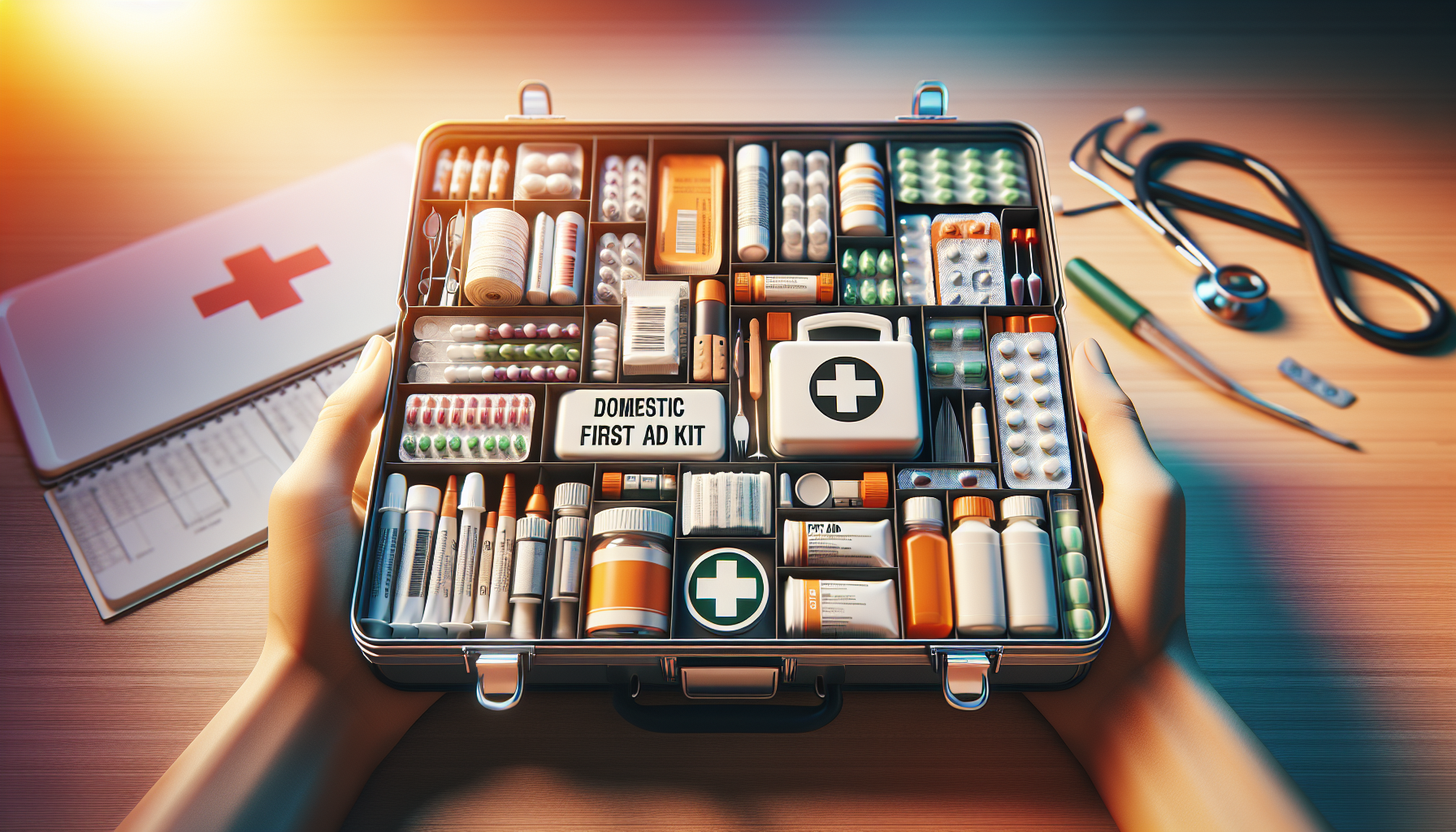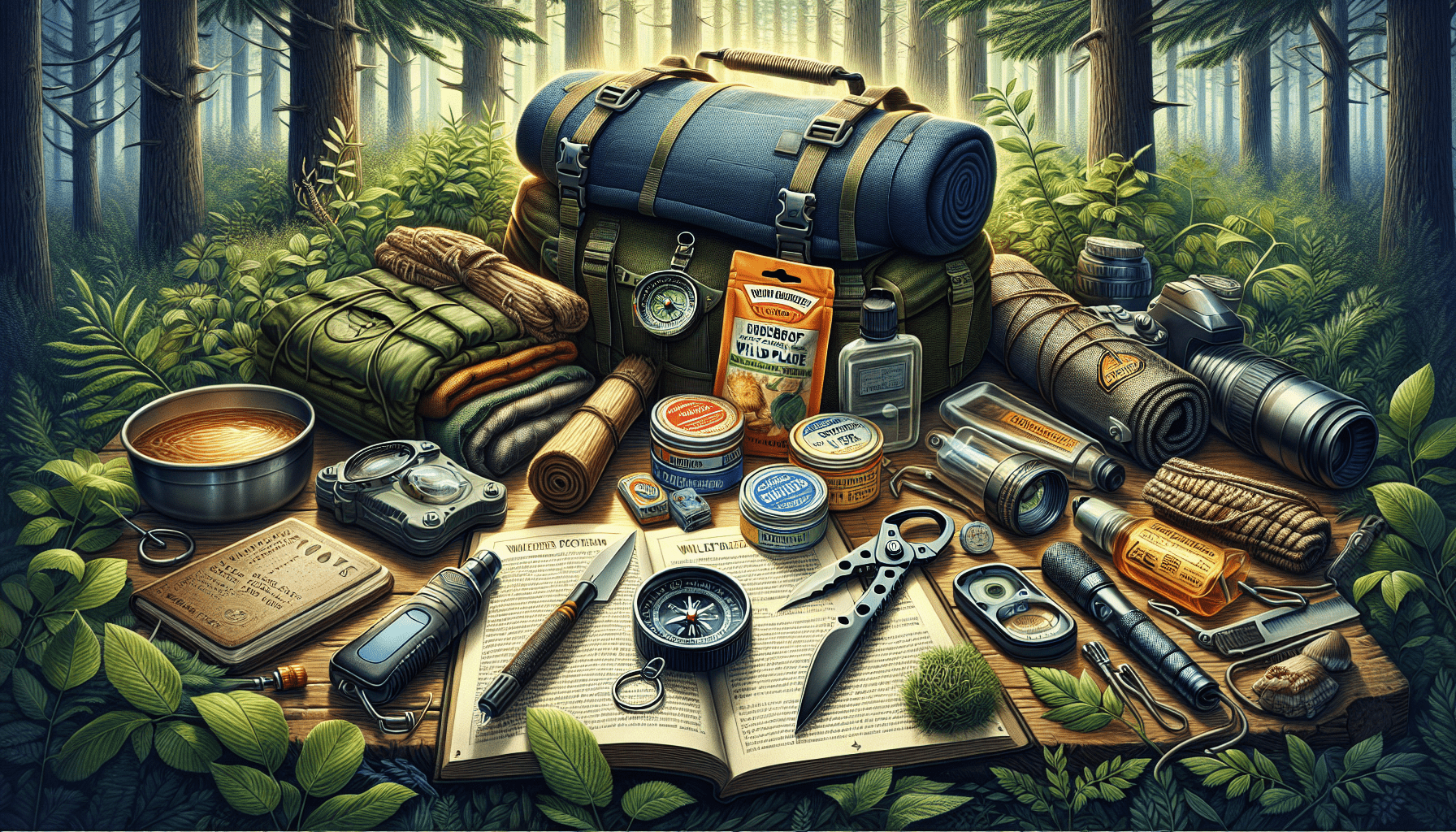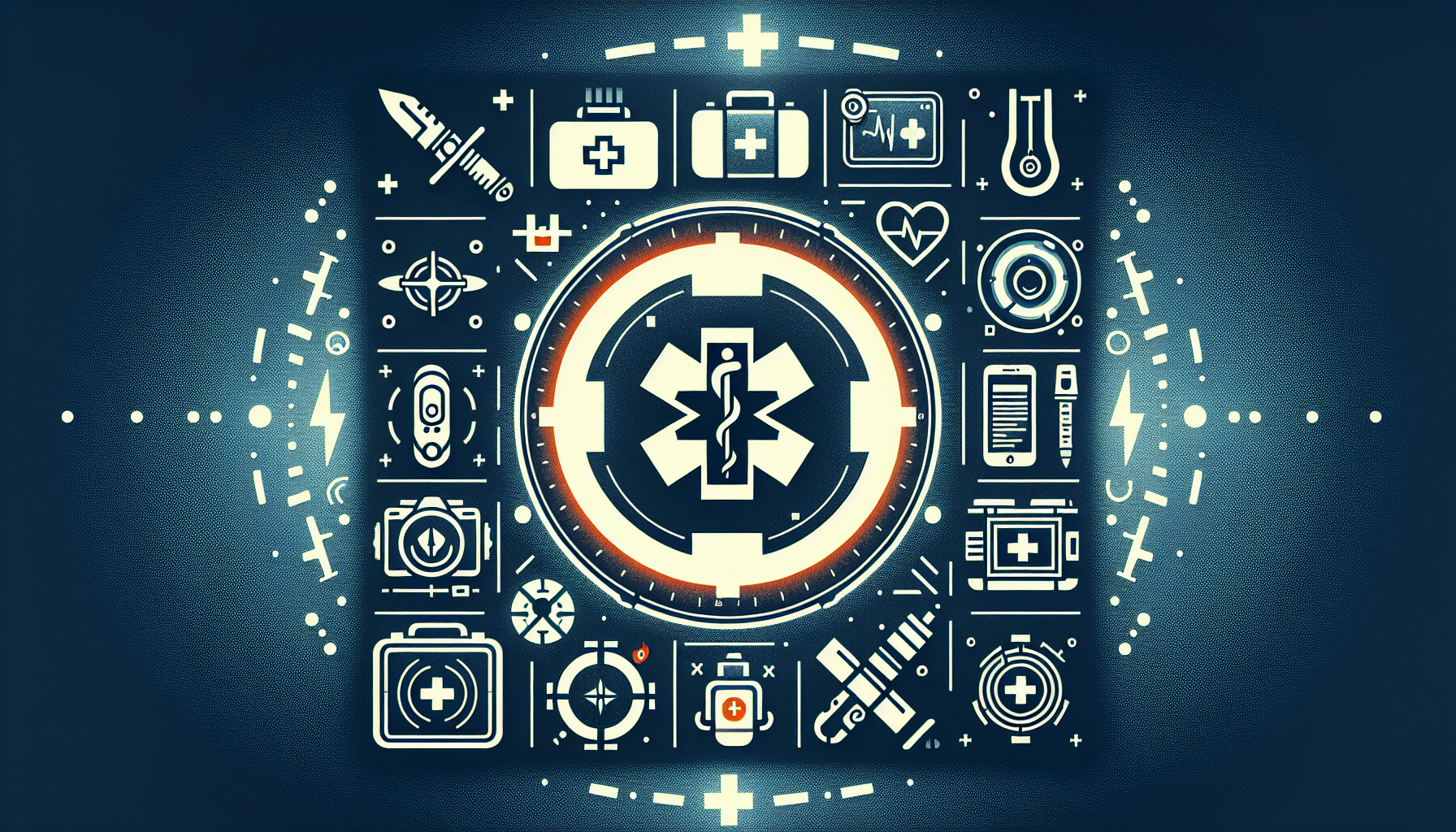Beginner’s Guide To Building A Home First Aid Kit
Building a home first aid kit is an essential step towards ensuring the safety and well-being of you and your loved ones. In this beginner’s guide, you’ll find valuable information on what items to include in your kit, how to organize it effectively, and why having a well-stocked first aid kit is crucial in times of emergencies. From basic essentials like bandages and antiseptics to more advanced items such as splints and adhesive tape, this guide will equip you with the knowledge you need to create a comprehensive first aid kit that can tackle minor injuries and potentially save lives. So, let’s get started on this journey of preparing yourself for unexpected situations with a reliable home first aid kit!
Choosing the Right Container for Building A Home First Aid Kit
When it comes to building a home first aid kit, choosing the right container is the first step towards creating an organized and accessible kit. Assessing your storage needs is essential to determine the size and type of container that will work best for you. Consider the number of people in your household and any specific medical conditions that may require additional supplies.
Once you have determined your storage needs, you can select a suitable container. Look for a container that is sturdy, spacious, and easily portable. A plastic or metal container with a secure lid is a good choice as it will help protect your supplies from moisture and potential damage. Opt for a container that has compartments or dividers to keep your supplies organized and easily accessible.
Portability and accessibility are two important factors to consider when choosing a container. You may need to take your first aid kit with you on camping trips, vacations, or other outings, so a container that is lightweight and easy to carry is ideal. Additionally, ensure that the container is easily accessible, allowing you to quickly grab the supplies you need in case of an emergency.
Essential First Aid Supplies
To ensure that your home first aid kit is well-equipped to handle common injuries and medical emergencies, it is essential to include a variety of essential first aid supplies. Here is a list of items that should be included in your kit:
- Adhesive bandages: These are handy for small cuts and scrapes.
- Gauze pads and adhesive tape: These are useful for larger wounds that require more protection.
- Antiseptic wipes: These can be used to clean wounds and prevent infection.
- Instant cold packs: These provide relief for swelling and pain in case of sprains or strains.
- Thermometer: A digital thermometer is essential for monitoring body temperature.
- Tweezers and scissors: These tools can be used for removing splinters or cutting bandages.
- Disposable gloves: Gloves are necessary to maintain proper hygiene while attending to injuries.
- Cotton balls and swabs: These are useful for cleaning wounds or applying medication.
- Safety pins: Safety pins can be used to secure bandages or clothing in emergency situations.
- First aid manual: A comprehensive guide that provides instructions for various first aid techniques.
- Emergency contact information: Include a list of emergency contact numbers for quick reference.
Including these essential first aid supplies in your kit will help you effectively handle a wide range of minor injuries and emergencies.
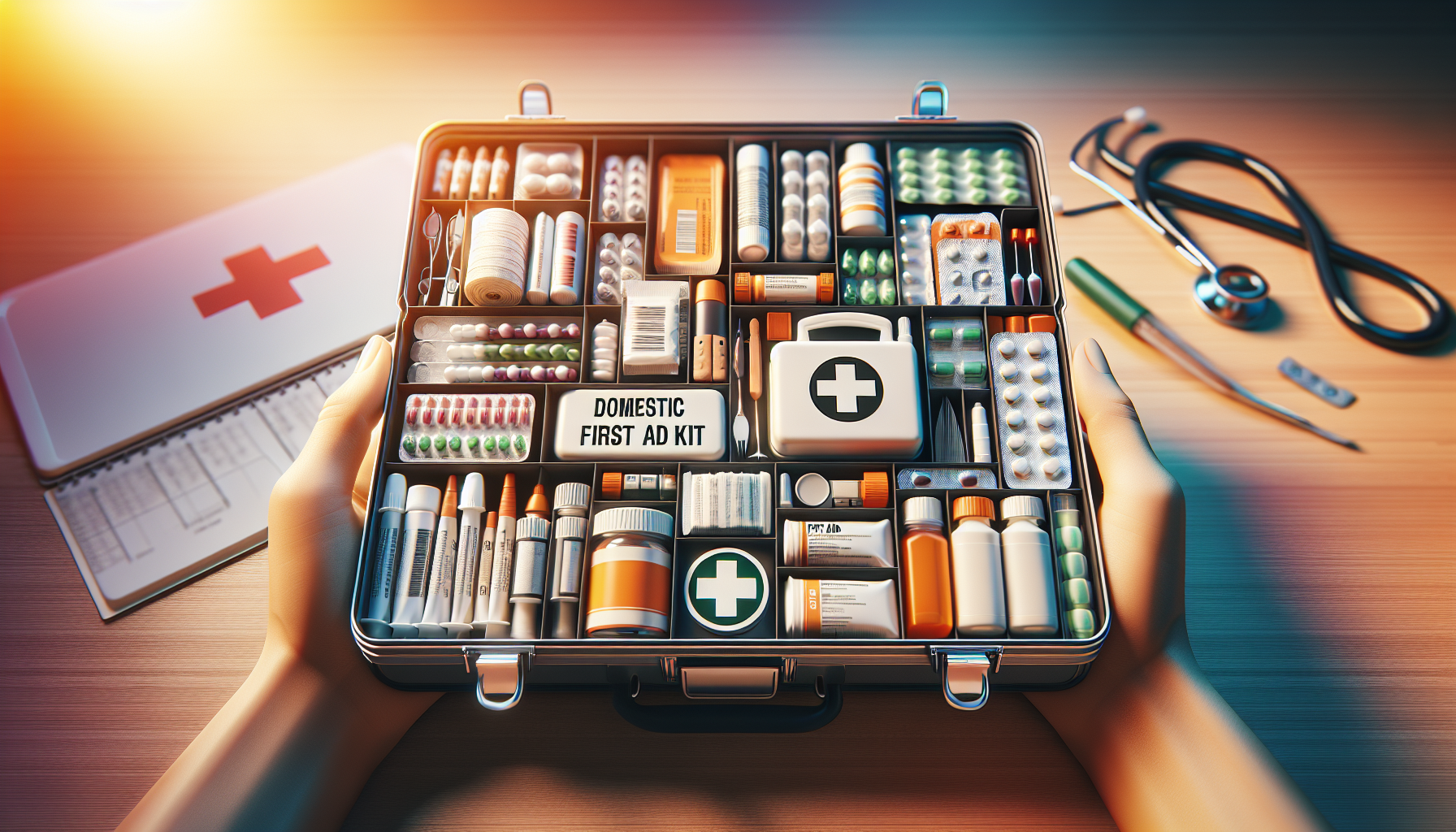
Medications and Personal Items
In addition to first aid supplies, it is important to include a selection of medications and personal items in your home first aid kit. These items can provide relief for common ailments and help manage medical conditions. Here are some medications and personal items that should be considered:
- Prescription medications: If you or any family members have prescribed medications, make sure to include a sufficient supply in your kit.
- Over-the-counter pain relievers: Acetaminophen or ibuprofen can provide relief for minor aches and pains.
- Allergy medications: Antihistamines can help alleviate symptoms of allergic reactions.
- Antacids and anti-diarrheal medication: These can provide relief for digestive issues.
- Sunscreen and insect repellent: These are essential for protecting against sunburn and insect bites.
- Personal medications and medical devices: If you or any family members have specific medical conditions, include the necessary medications or medical devices.
By including these medications and personal items in your first aid kit, you can ensure that you are prepared to address a variety of health concerns.
Additional First Aid Tools
While the essential first aid supplies mentioned earlier are crucial, there are additional tools that can enhance your ability to provide effective first aid. Consider including the following items in your kit:
- CPR mask: A CPR mask is a crucial tool for performing CPR safely.
- Splint: A splint can be used to immobilize and support broken or injured limbs.
- Burn gel or cream: These products provide immediate relief and aid in the healing process for burns.
- Eye wash: Eye wash can be used to flush out foreign objects or irritants from the eye.
- Medical gloves: Extra gloves can be included for additional protection and hygiene.
- Emergency blanket: This blanket provides warmth and insulation in emergency situations.
- Triple antibiotic ointment: Antibiotic ointment helps prevent infection in minor cuts and burns.
- Medical adhesive tape: This tape is useful for securing bandages and dressings.
- Finger splint: A finger splint can provide stability and support for finger injuries.
- Rescue whistle: A whistle can be used to attract attention in emergency situations.
Including these additional first aid tools in your kit will equip you with the necessary resources to respond effectively to a wide range of medical emergencies.
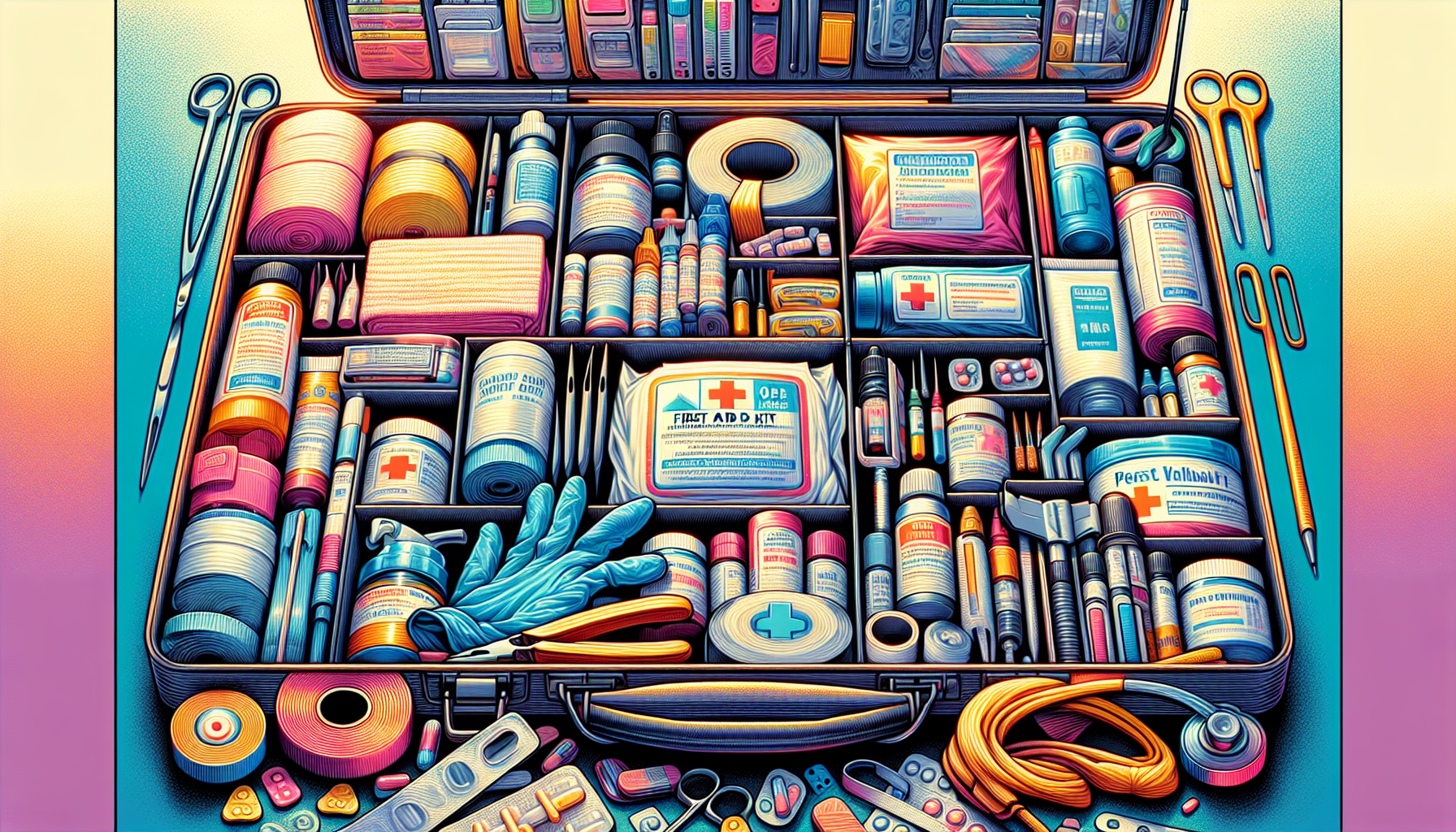
Storage and Organization
Proper storage and organization of your home first aid kit are essential to ensure that the supplies are readily accessible when needed. Here are some tips for storing and organizing your kit:
- Separating supplies into categories: Group similar items together, such as bandages, medications, and tools, to make them easier to locate.
- Using dividers or compartments: Utilize the compartments or dividers in your container to keep supplies organized and prevent them from becoming mixed up.
- Labeling and inventory management: Clearly label each section of your kit and regularly check and replenish supplies to ensure you are always prepared.
- Storing in a cool and dry place: Keep your first aid kit in a location away from direct sunlight and extreme temperatures to prolong the shelf life of medications and supplies.
- Checking expiration dates regularly: Check the expiration dates of medications and other perishable items regularly, and replace them as needed.
By following these storage and organization tips, you can maintain an efficient and functional home first aid kit.
Emergency Preparedness
Building a home first aid kit is just one aspect of emergency preparedness. It is important to have a comprehensive emergency action plan in place and to be familiar with basic first aid techniques. Here are some key components of emergency preparedness:
- Creating an emergency action plan: Develop a plan that outlines how to respond to different emergencies and assign roles and responsibilities to family members.
- Knowing basic first aid techniques: Consider taking a first aid training course to learn essential skills such as CPR, wound care, and how to assess vital signs.
- Understanding when to seek professional help: While a first aid kit can provide immediate care, it is important to know when to seek professional medical help.
- Practicing drills and scenarios: Regularly conduct emergency drills with your family to familiarize everyone with the actions they need to take in different emergency situations.
- Updating and maintaining the kit: Regularly review and update your first aid supplies to ensure that they are up to date and meet your family’s needs.
By establishing a comprehensive emergency preparedness plan and maintaining your first aid kit, you can be better equipped to handle emergencies effectively and ensure the well-being of your family.
Child-Specific Items
If you have children in your household, it is essential to consider their specific needs when building a home first aid kit. Here are some child-specific items that should be included:
- Child-sized adhesive bandages: These bandages are designed to fit smaller cuts and scrapes on children’s bodies.
- Thermometer suitable for kids: Use a digital thermometer that is suitable for children to accurately monitor their body temperature.
- Child-friendly pain relievers: Include pain relievers formulated specifically for children, following the recommended dosage guidelines.
- Infant and child CPR instructions: Keep instructions for infant and child CPR in your kit, as the techniques can differ from those used on adults.
- Hydrocortisone cream for rashes: Rashes are common in children, so including hydrocortisone cream can provide relief from itching and irritation.
- Baby wipes and diapers: If you have infants or toddlers, include baby wipes and diapers in your kit to address their specific needs.
- Children’s allergy medication: If your child has allergies, include children’s allergy medication to provide relief from allergic reactions.
By including these child-specific items in your home first aid kit, you can ensure that you are well-prepared to address the unique health needs of your children.
Pet-Specific Items
If you have pets, it is important to consider their well-being in emergency situations as well. Here are some pet-specific items that should be included in your home first aid kit:
- Pet first aid manual: Keep a pet-specific first aid manual in your kit to guide you in providing care for your furry friends.
- Gauze and adhesive bandages for animals: These supplies can be used to treat wounds on pets.
- Pet-friendly antiseptic wipes: Use antiseptic wipes formulated specifically for pets to clean wounds and prevent infection.
- Tweezers for removing splinters or ticks: These tools are essential for removing splinters or ticks from your pet’s skin.
- Pet nail clippers: Keep nail clippers handy to ensure your pet’s nails are properly maintained.
- Pet emergency contact information: Include contact information for your veterinarian and animal poison control center in case of pet-related emergencies.
- Pet-specific medications: If your pet requires any medications, make sure to include them in your kit.
By including these pet-specific items in your home first aid kit, you can ensure that your beloved pets receive proper care during emergencies.
Regular Inspection and Maintenance
To ensure the effectiveness of your home first aid kit, it is important to regularly inspect and maintain it. Here are some steps to keep your kit in optimal condition:
- Checking for expired medications: Regularly check the expiration dates of medications and replace them as needed.
- Restocking used or missing supplies: Keep track of supplies that have been used or are running low, and restock them promptly.
- Testing and replacing batteries: If your first aid kit includes devices that require batteries, test them regularly and replace the batteries as required.
- Updating emergency contact information: Make sure to update emergency contact information, including phone numbers and addresses.
- Keeping the kit clean and organized: Regularly clean your first aid kit and return supplies to their designated places to maintain organization and accessibility.
By consistently inspecting and maintaining your first aid kit, you can ensure that it is always well-prepared and ready to meet your family’s needs in emergencies.
First Aid Training and Certification
While having a well-stocked first aid kit is important, knowing how to use its contents effectively is equally crucial. Consider obtaining first aid training and certification to enhance your ability to provide proper care in emergency situations. Here are some key aspects of first aid training:
- The importance of first aid training: First aid training equips individuals with the knowledge and skills necessary to provide immediate care during medical emergencies.
- Finding local training courses: Look for local organizations or institutions that offer first aid training courses, such as community centers, hospitals, or the Red Cross.
- Online resources and certifications: Some organizations offer online courses and certifications that can be completed at your own pace.
- Refresher courses and ongoing education: Keep your first aid skills up to date by attending refresher courses or participating in ongoing education opportunities.
By investing in first aid training and certification, you can gain the confidence and skills needed to effectively respond to emergencies and potentially save lives.
In conclusion, building a home first aid kit is a vital step in ensuring the well-being of your family in the face of medical emergencies. By carefully selecting the right container, including essential supplies and medications, organizing the contents, and staying prepared through regular inspection and maintenance, you can be confident in your ability to provide immediate care when it matters most. Remember, emergencies can happen at any time, so it is crucial to have an emergency action plan in place and to seek proper first aid training and certification. With a well-stocked and well-maintained home first aid kit, you can be better prepared to handle unexpected situations and provide critical care when it is needed most.

